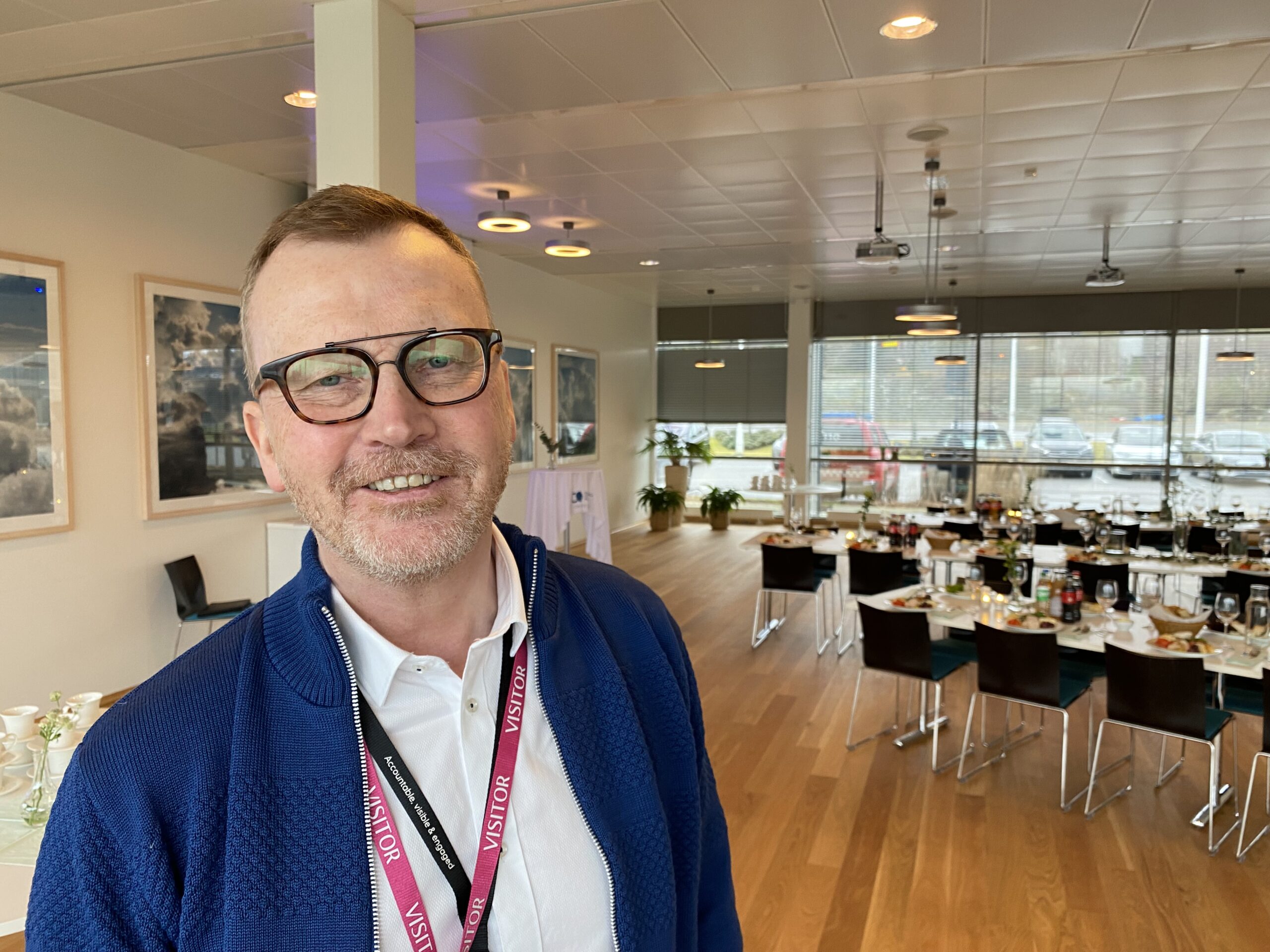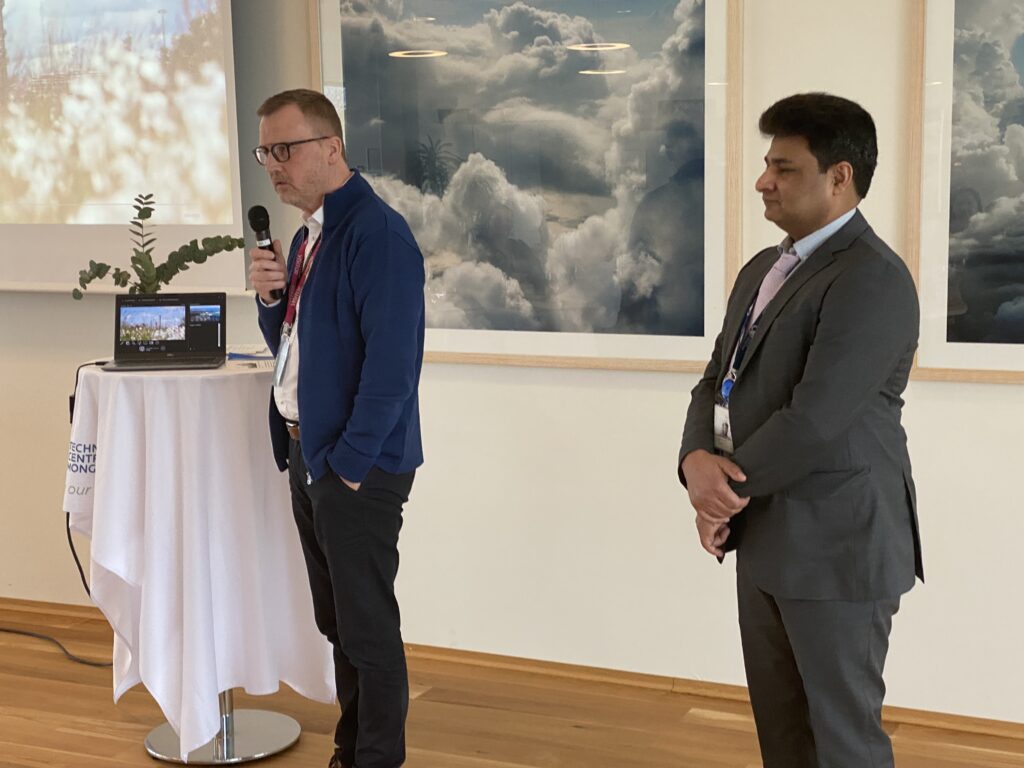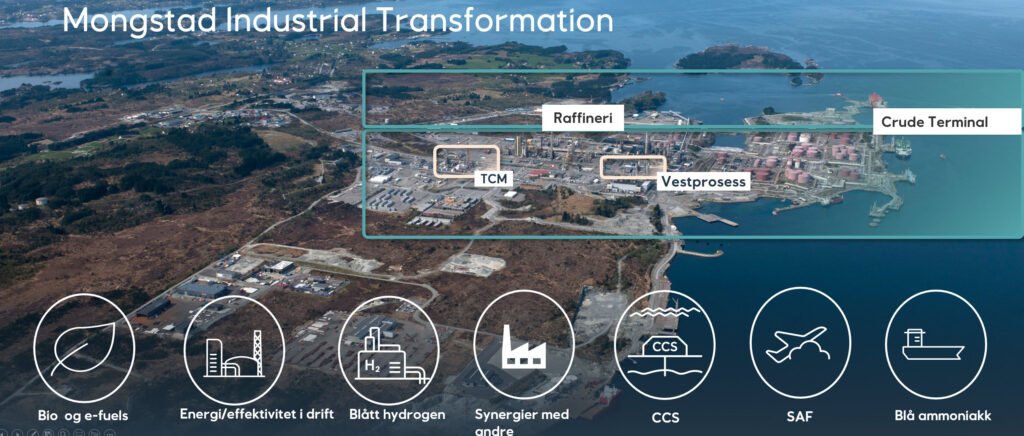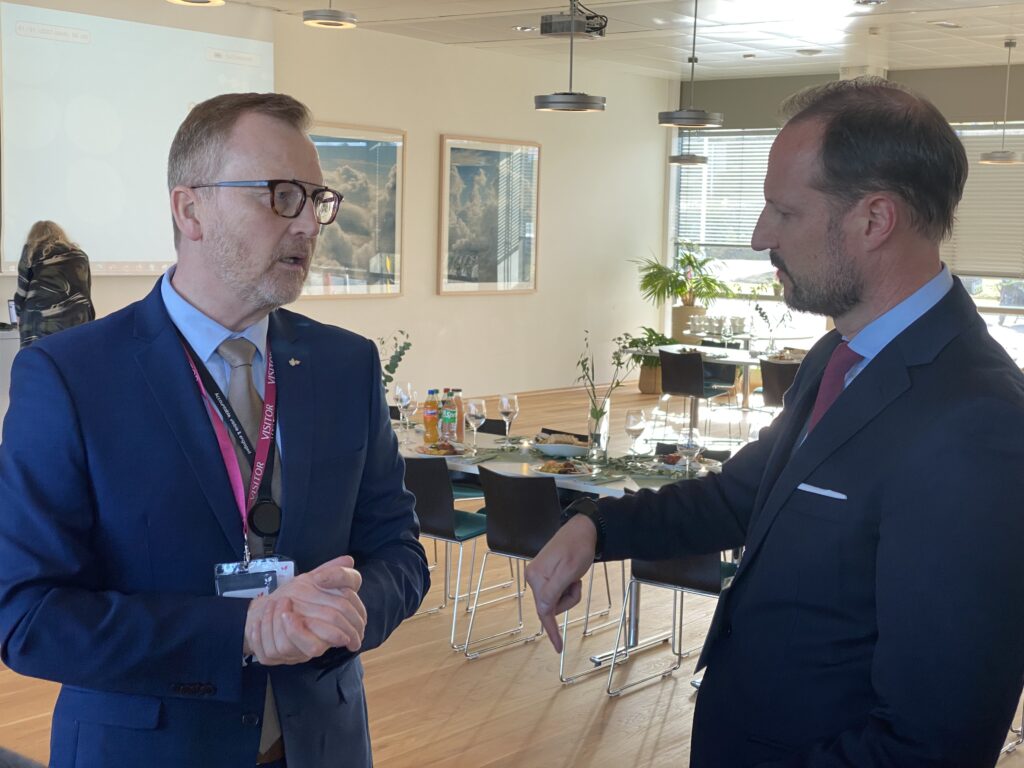
12.04.2024
TCM’s good neighbor has visionary plans at Mongstad
”Equinor Mongstad stands as Norway’s sole oil refinery. Amidst evolving global dynamics, the facility plays a pivotal role in ensuring our nation’s energy security, with the majority of its output earmarked for export.”
“However, with the refinery at Mongstad nearing its 50th anniversary, its longevity is under scrutiny. Consequently, we are spearheading several transformative projects aimed at fostering sustainable and lucrative production, thereby bolstering regional employment and prosperity.”
Assuming the helm of Equinor Refining Norway at the dawn of the year, Bernt E. Tysseland now leads a workforce of approximately 900 employees. With an annual refining capacity of 12 million tons, the facility receives 40 percent of Norway’s crude oil production from its continental shelf. Its principal outputs encompass gasoline, diesel oil, jet fuel, and other light petroleum derivatives, predominantly destined for international markets.
Equinor Mongstad also supplies the flue gas that TCM uses for testing CO2 capture technologies and is responsible for the operation of the facility.
”Equinor is therefore one of the few companies in the world with practical experience in operating a CO2 capture facility. We have extensive offshore experience in capturing and storing CO2, and carbon capture and storage (CCS) is important for many of our projects. Therefore, we are very pleased that TCM is secured for further operation, and that Equinor’s ownership stake has increased. We hope TCM will succeed in developing the business on commercial terms. Not everyone is fortunate enough to have a world-leading neighbor in CO2 capture technology. TCM is of crucial importance for Equinor’s own insight and expertise in carbon capture and storage”, emphasizes Tysseland.


To cut emissions by 850,000 tons of CO2
This expertise will be important for guiding the industry at Mongstad through the green shift.
”By 2030, Norway aims to reduce greenhouse gas emissions by 55 percent, compared to 1992. At the same time, we cannot stop all production of fossil energy, because there will still be needs that must be met. But there will be lower demand for several products delivered from Equinor Mongstad, especially gasoline. Therefore, it is important that the facility considers what opportunities it has to adapt to the future market,” says Tysseland.
Equinor aims to reduce the company’s CO2 emissions by 50 percent, and to achieve this goal, there must be reductions in emissions both from the seabed and from point sources on land. ”Mongstad is unfortunately in a somewhat unique position with nearly 1.7 million tons of CO2 emissions annually, which is about 3 percent of Norway’s total emissions. We have demonstrated the ability to adapt, and already deliver bio-products. We have also been working on energy efficiency for a long time, but this is far from enough.” Tysseland says the goal for Equinor Mongstad is to halve the facility’s CO2 emissions.
Mongstad Industrial Transformation (MIT)
”We have looked at various ways to do this, and concluded that decarbonization of the fuel gas we need for boilers and furnaces used in our processes is the best and most sustainable, and that this is best achieved through the production of blue hydrogen. In this way, we can decarbonize the gas and obtain a product with virtually zero emissions, while maintaining the production of petroleum-based products we need in a supply situation. We will still have emissions from the cracker as long as it is in production. At the same time, we will increase the production of biomass, and thereby reduce emissions. But we will continue to supply the flue gas TCM needs for testing carbon capture technologies”, he assures.
This project is called Mongstad Industrial Transformation (MIT), which requires the establishment of a hydrogen plant of a certain size and capacity.
Factory for the production of blue hydrogen
Tysseland explains that Mongstad now, regardless of MIT, is one of two possible Equinor locations for a large hydrogen plant – for the export of hydrogen to Europe. This is being worked on in the Clean Hydrogen to Europe (CHE) project, where the other location option is Kollsnes in Øygarden. This project is in an early stage, and there is a long way to go before any investment decision. Regardless of this, Equinor therefore sees the opportunity for development at Mongstad using hydrogen.
”The establishment of a hydrogen plant, regardless of size, will require us to capture the CO2 and store it. A blue hydrogen production facility has great opportunities for downstream hydrogen-based industries, such as blue ammonia, especially for use in the maritime sector”, he says.
Giant project for CO2 storage
Two years ago, Equinor was granted a license to plan the expansion of capacity for CO2 storage at the Smeaheia field, east of the Troll field in the North Sea, to 20 million tons annually. This implies a significant increase in the capacity to store CO2 on a commercial basis on the Norwegian continental shelf. Northern Lights, the CO2 storage facility in the Langskip project, has a planned injection capacity of 1.5 million tons per year in phase 1 with startup in 2025, and can later be expanded to 5-6 million tons per year.
”Developing CO2 transport and storage quickly and on a large scale is crucial for Europe to achieve its climate goals. Smeaheia is a CO2 transport and storage project that connects large CO2 transport solutions in Northwest Europe to the enormous reservoir beneath the seabed in the North Sea. The project considers both a CO2 pipeline and transport of CO2 by ship. The Smeaheia project is based on a shipping terminal at Sture in Øygarden, but there is also work being done on a separate CO2 transport solution for Mongstad.

Needs competitive framework conditions
For the projects included in MIT, Equinor is now conducting preparatory work, where during the year, a decision will be made whether to conduct a feasibility study with a process line.
”The prerequisite for moving forward will be that MIT, in total, is profitable. For that, we need a clear political acceptance of blue hydrogen as an energy carrier. But we also need access to enough power, and then we need predictable regulatory development in line with the EU.”
Tysseland points out that carbon capture and storage (CCS) as a means of reducing CO2 emissions is not directly profitable today without risk mitigation to support these investments. He is more optimistic about sustainable industrial development, but it requires access to hydrogen.
”As Equinor embarks on transformative endeavors like the Mongstad Industrial Transformation (MIT), conducive regulatory frameworks and robust political support emerge as imperative prerequisites. The viability of such initiatives hinges upon unequivocal acknowledgment of blue hydrogen’s role as an energy carrier, coupled with sustained investment in infrastructure and regulatory alignment with EU standards”, emphasizes the head of Equinor Mongstad.
”To translate aspirations into tangible outcomes, collaborative efforts between industry stakeholders, governmental bodies, and local communities become indispensable. By fostering synergistic partnerships and prioritizing sustainable development, we can chart a course towards enduring prosperity for Norway, the West Coast, and the Mongstad region.”
